 Contact us
Contact usIntent
Community
Studio Organo Concepts
About Us
Subsidaries
Studio Organo
TS RERA No.P02400003403.
TS RERA No.P02400003403.

Author: Phanindra Uppalapati, Manager-Product
1)In today's digital age, Automated Weather Stations (AWS) lead the way in meteorological data collection and analysis. These state-of-the-art systems autonomously gather, record, and transmit crucial meteorological data without human intervention. AWS units are equipped with advanced sensors, measuring a wide range of weather parameters, including temperature, humidity, air pressure, wind speed, precipitation, and solar radiation. This data is relayed in real-time to central databases, weather agencies, research institutions, and more.
The biggest hurdle when it comes to designing sustainable systems such as rainwater harvesting, natural ventilation design, solar irradiation, etc. is the availability of reliable data that is specific to a few kilometres within a project site.
To ensure that we have reliable data for our projects in and around Chevella, we have installed an automated weather station in Organo Antharam. The data that we capture through the AWS will give us precise readings and help in designing our communities better.

Automated Whether Station @ Organo Antharam
Key Features of an Automated Weather Station:
Sensors: AWS boasts a variety of dedicated sensors for precise meteorological measurements.
Data Logger: Collected data is efficiently processed and stored in a data logger.
Transmitter: AWS units transmit data to central locations, often through cellular networks.
Power Supply: They are powered by various sources, such as solar panels or batteries.
Mounting and Enclosure: Securely installed on platforms and housed in weather-resistant enclosures.
Data Management Software: Software manages, processes, and displays collected weather data.
The Mighty Sensors: Unveiling Weather Station Instrumentation
1)Pyranometer:
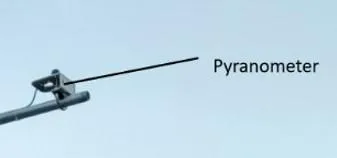
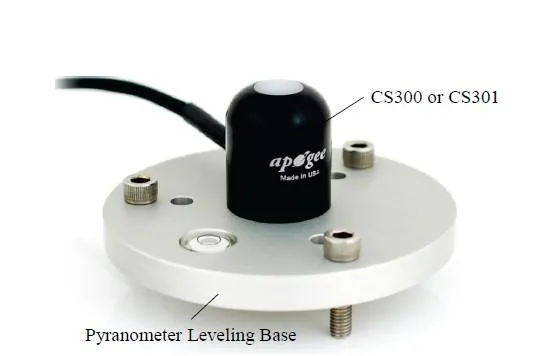
A pyranometer, a meteorological marvel, quantifies solar energy reaching Earth's surface. It gauges total solar irradiance (TSI) in watts per square meter (W/m²). These instruments are equipped with sensors sensitive to the entire solar spectrum, capturing both direct and diffuse sunlight. Pyranometers are mounted horizontally, transcending sun direction, and provide invaluable solar insights.
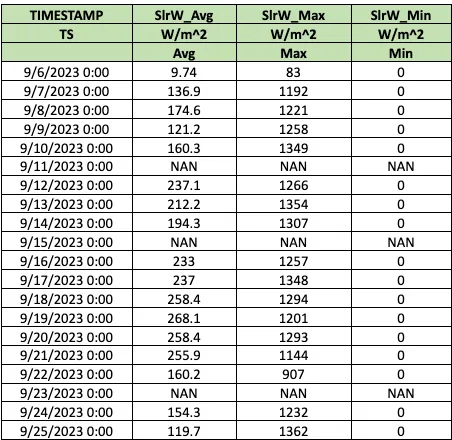
Analysis:
This data was collected by Pyranometer at Organo Antharam from sep 6-sep 25 2023 on daily basis, from this it can interpreted that on 19/9/2023 where a max. wattage of 268 watts were generated.
2) Air Temperature and Relative Humidity Sensor:
An ingenious dual sensor, combining temperature and humidity measurement, enhances meteorological precision. Temperature sensors, including RTDs, thermocouples, and thermistors, assess air temperature. Meanwhile, humidity sensors, or hygrometers, gauge relative humidity (RH) to define moisture content.
Temperature Sensor:
A temperature sensor, often referred to as a thermometer or temperature probe, measures the temperature of the air where it is placed in. There are different types of temperature sensors, including resistance temperature detectors (RTDs), thermocouples, and thermistors. Each type has its own method of temperature measurement. Currently at Organo Antharam we are using RTD at our site.
RTD and thermistors change their electrical resistance with temperature, while thermocouples generate a voltage that is proportional to the temperature difference between their two ends. The output from these sensors is typically in degrees Celsius (°C) or degrees Fahrenheit (°F), depending on the chosen scale.
Humidity Sensor:
A humidity sensor, also known as a hygrometer, measures the relative humidity (RH) of the air. Relative humidity is a measure of how much moisture is in the air compared to the maximum amount it can hold at a given temperature.
The output of a humidity sensor is typically given as a percentage (%), representing the relative humidity level.


Analysis:
From the above we could see that Avg. relative humidity is more than 95% on 25/9/2023, which indicates that air totally saturated with water vapor and cannot hold any more, creating a possibility for rain.
Humans are sensitive to very high humidity. So if the air is at 100% relative humidity sweat will evaporate into the air. As a result, we feel much hotter than the actual temperature when there is high relative humidity.
When there’s low relative humidity, we feel much cooler than the actual temperature as our sweat evaporates easily.
3) Barometric Pressure Sensor:
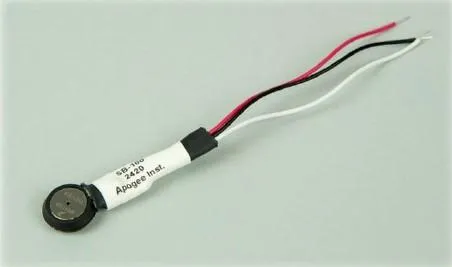
A barometer quantifies atmospheric pressure—our atmosphere's invisible weight. By gauging pressure in atmospheres or bars, barometers detect shifts that herald weather changes.
Rapid drops signify impending low-pressure systems, often heralding cloudy, rainy, or windy conditions. Conversely, high-pressure zones herald cool, dry air and clear skies.
In our case the Barometric Pressure Sensor is placed in the Datalogger enclosure. Where it is protected from precipitation, condensation and dynamic pressure caused by wind.
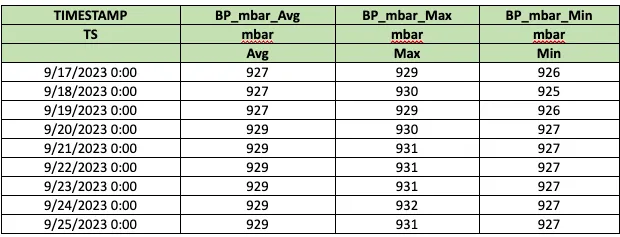
4) Rain Guage:
Rain gauge sensors, a meteorological workhorse, capture precipitation's essence—rainfall. Their mission? To quantify rain at precise locations over time. A diverse array of rain gauge sensors exists, including the Standard, Tipping Bucket, and Optical types.
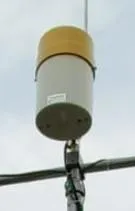
At Organo Antharam we are using tipping bucket rain gauge sensor.
This ingenious design employs a funnel to channel rainwater into a balancing bucket. Upon reaching a set level, the bucket tips, empties, and logs the rainfall amount. Perfect for automatic weather stations and data loggers, it offers accurate measurements of rainfall intensity and accumulation.
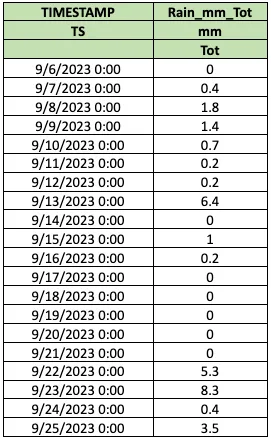
Analysis:
From the above data collected from Sep-6-2023 to Sep-25-2023 the highest rainfall recorded was 8.3mm.
5) Soil Moisture & Temperature Sensor:
A soil's secrets unveiled! Soil moisture and temperature sensors serve as indispensable tools in agriculture, environmental studies, and scientific research. These devices empower us to measure and monitor soil moisture content and temperature with precision, offering invaluable insights into soil health, irrigation optimization, and plant growth.
a) Soil Moisture Sensor:
b) Soil Temperature Sensor:

At Organo Antharam Soil Moisture & Temperature sensors are laid at 40 cm at 4 varying levels starting from 0.4m to 1.6m from the soil top level.

Analysis:
Data collected reveals an average soil temperature of 27 degrees Celsius—an ideal range for crops like tomatoes (20-26°C) and leafy vegetables (10-20°C).
6) Wind Speed and Direction Sensor:
At Organo Antharam, a single instrument combines wind speed and wind direction sensors, providing a comprehensive view of atmospheric conditions.
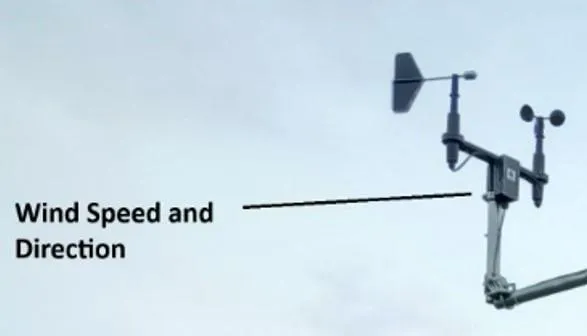
Wind Speed Sensor (Anemometer):
Wind Direction Sensor (Wind Vane):

Analysis:
From the above data collected from sep-18 to sep-25 it can be interpreted that average wind speed at Organo Antharam is 2.2 m/s and the site location is experiencing mostly west-southwest winds.
Above 247.5 degress its considered as west south west winds(WSW) and 225 degres is considered as south west winds (SW).
The general direction of these Southwest winds blows from the southwest to the land after crossing the equator and enters the Bay of Bengal and Arabian Sea and follow the south westerly direction. It is considered that the Southwest Monsoon covers approximately 80% of the rainfall in India. This season starts in June and ends in September.
References:
We are a cross-functional and research-focused team of architects, engineers, and technical experts, who ideate, refine and detail eco habitat products, components, and solutions. Our core intent is to co-create and manifest apt rurban lifestyles across all eco-habitat components to celebrate the living for respective user groups. From earth-friendly neighborhoods to home interiors, we’ve got it all covered.
Instagram: https://www.instagram.com/studioorgano/
Website: https://www.organo.co.in/studio-organo
If you’d like to know about our design explorations or if you would like to be part of our user research as we refine the design, please email us at studio@organo.co.in